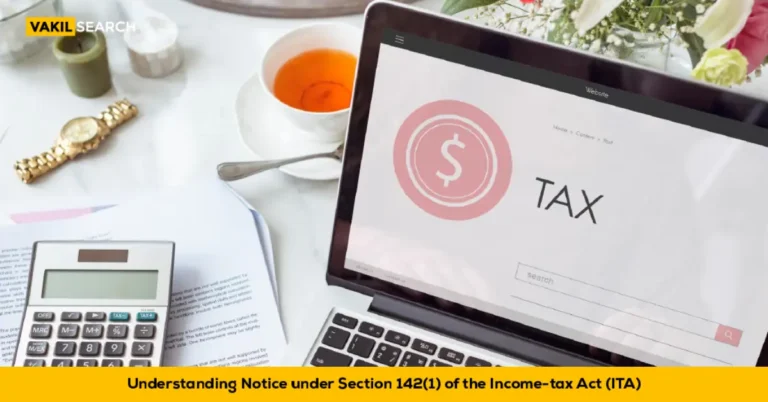We look into what is the definition of immovable property as per the law and what are the rules for accounting the capital gains made on the sale of immovable property as per the rules. The word immovable is a subjective one. Something that is movable by one person might not be movable by someone else. But the law is common to a very large and diverse group of people and entities. So for a law to be effective, the definition of the thing that the law has been made for has to be very general in nature so it can accommodate everyone that is subject to it. And this is, indeed, the case with the definition of the word ‘immovable’ property.
Immovable Property vs Movable Property
If you look at any balance sheet, we see all kinds of properties classified under the heading of ‘Fixed Assets’. This includes land, machinery, vehicles, furniture, jewellery. All of these come under the ambit of fixed assets. So then how does one define what is considered movable and what is considered immovable. So to identify this, we have to identify what is the essential nature of the asset, and answer one simple question. Can this asset be moved by anyone from point A to point B without altering its essential nature? Or in simple words, can it be moved from point A to point B, as it is? If the answer is yes, then it is movable property and if the answer is no, then it is immovable property. Capital Gain on Immovable Property is the profit earned by an individual on the sale of a property.
As of now, very few assets fall in this category. Land, buildings, water bodies, trees, plants and crops are some of them.
Calculating the Capital Gain
How does one calculate the gain on any property? Selling price minus buying price is the most simplistic, universal formula. If you want to make it more accurate, you add depreciation to the equation as well. But immovable property does not work that way. The kind of money and value that is exchanged in a transaction that involves immovable property has very far reaching implications to the wealth and the economy of the country. And so several factors have to be taken into account when arriving at the value of the capital gain tax. Capital Gain on Immovable Property is subject to income tax under the Income Tax Act, 1961.
Firstly, there are the changes that have been made to the property by the investor in the duration of its purchase and its subsequent sale. If it is land, the investor may have spent a certain amount on landscaping, growing trees, and plants or constructing buildings on it. If it is a water body the investor might have built a jetty or a bridge. If it is a building the investor might have spent money on painting it, adding furniture, or constructing additional structures to it. All these expenses enhance the value of the property and hence have to be added to the buying cost of the property to arrive at the appropriate value during the time of the sale. The technical term for such costs is ‘Cost of Improvement.’ But there is one more step involved, which makes this calculation as complex as it seems.
Immovable properties are usually purchased as long term investments, running into decades and even hundreds of years sometimes. And so, the impact of time and inflation can be massive in transactions such as these. The cost of something in one particular year may not cost the same in the year it is being sold. So you have to consider the inflation that has occurred since the time of the expenditure to arrive at the current value of the same expenditure accurately during the time of the sale.
For this, we take into account what is known as the ‘Cost Inflation Index’ or CII which is a value that is calculated and released by the Income Tax Department every financial year. The impact of time and inflation on the Immovable Property Being Sold is calculated by dividing the CII in the year of sale by the CII in the year the cost was incurred. And when this value is multiplied with the various actual costs we arrive at what is called ‘Indexed Cost’ which in simple words is the ‘Cost’ that has been adjusted for inflation.
Take the guesswork out of taxes – our Tax Calculator provides precise computations.
Saving Capital Gains Tax on the Sale of Property
- Invest in capital gains bonds: Under Section 54EC of the Income Tax Act, individuals can save on capital gains tax by investing the sale proceeds in specified government bonds within a specified period. These bonds come with a lock-in period of five years and provide an exemption from capital gains tax
- Purchase Another Residential Property: You can save on capital gains tax by investing the sale proceeds into another residential property within a specified period. Section 54 of the Income Tax Act allows this, subject to certain conditions, such as holding the new property for a specific duration. If you invest the entire sale amount into purchasing or constructing another house, you can get a 100% exemption on capital gains tax under Section 54F
- Opt for Capital Gains Account Scheme: If you haven’t used the sale proceeds to purchase a residential property before filing your income tax return, you can deposit the money in a Capital Gains Account Scheme. This allows you to defer the capital gains tax until you acquire the new property
- Use Indexation Benefit: Indexation is a significant tax-saving strategy for long-term capital gains. It adjusts the acquisition cost of the asset based on the inflation index, thereby reducing the taxable amount.
Illustration for Calculation of Capital Gain on Immovable Property
Let’s take this with an example. An Immovable property was bought for ₹1,000 in the year September 2005. So ₹1,000 is the ‘Buying Cost’. The same year, in December, some construction work was done for ₹500, which is ‘Cost of Improvement’. And it was sold in January 2020 for ₹5,000, the ‘Selling Price’. Now, on the face of it if we can say that there is a profit of ₹3,500 from the equation,
₹5,000 – ₹1,000 – ₹500 = ₹3,500
Let’s see the difference when we take inflation into account.
-
Step 1
First the ‘Buying Cost’. Now, since it was bought in September, 2005, we take the CII for the FY 2005-2006, which is valued at 117 units. And since it is being sold in January, 2020, we take the CII for the FY 2020-2021, which is valued at 301 units. So dividing the year of sale CII by the year of purchase CII, we get,
301 / 117 = 2.573 (rounded off)
So to arrive at the ‘Indexed Buying Cost’ we multiply this number with the ‘Buying Cost’.
₹1,000 * 2.573 = ₹2,573
-
Step 2
Next, we calculate the ‘Indexed Cost of Improvement’. Since it also incurred in the same financial year as the ‘Buying Cost’ the CII value will be the same as the one we arrived at while calculating ‘Indexed Buying Cost,’ which is, 2.573. Multiplying the ‘Cost of Improvement’ with this value, we get,
₹500 * 2.573 = ₹1,286
-
Step 3
Finally, to arrive at the ‘Capital Gain’ on sale of the immovable property, we deduct the ‘Indexed Costs’ from the ‘Selling Price’.
₹5,000 – ₹2,573 – ₹1,286 = ₹1,141
And hence, the actual profit is only ₹1,141, which is nearly three times lesser than the capital gain calculated without taking inflation into account.
Now take into consideration that transactions worth $180 billion took place in India in FY 2020 and you will get an idea of how crucial and delicate this calculation of Capital Gains on immovable property is.
Conclusion
The tax rate for Capital Gain on Immovable Property varies based on the holding period and the type of property. Calculating capital gains requires an expert’s hand to ensure a hassle free transaction. To reduce the tax liability on Capital Gain on Immovable Property, individuals can invest in certain specified bonds or purchase another property.
At Vakilsearch, we pride ourselves on having the right experts to cater to all your needs when it comes to matters of real estate and its taxation. Navigating the complexities of real estate tax laws can be daunting, but our team of seasoned professionals is equipped with the knowledge and experience to provide you with comprehensive solutions tailored to your specific requirements. Whether you need assistance with property tax calculations, capital gains tax, or any other real estate tax-related concerns, our experts are here to guide you every step of the way. Contact us to talk to an expert now.
Other Related Articles
- How to Calculate STCG and LTCG
- Complete details about Types of ITR
- What to Know About Form 29B
- Types of Income Tax Assessment
- What Is the Amount of Maximum Gratuity
- How to File TDS on Sale of Property
Frequently Asked Questions
How to Calculate Capital Gain Tax on Sale of Immovable Property?
To calculate capital gain tax on the sale of immovable property, determine the sale price and subtract the indexed cost of acquisition and any related expenses. If the property is held for more than two years, it qualifies as long-term capital gain (LTCG) and is taxed at 20% with indexation benefits.
How Much Capital Gain is Tax Free on Property?
Under Section 54 of the Income Tax Act, you can avail up to 100% exemption on capital gains if you reinvest the entire sale proceeds into another residential property within the stipulated period. Additionally, Section 54EC allows exemption by investing in specified government bonds within six months of the sale.
How Do I Avoid Capital Gains Tax on Sale of Property?
You can avoid capital gains tax by reinvesting the sale proceeds into another residential property under Section 54, investing in specified government bonds under Section 54EC, or by depositing the proceeds in a Capital Gains Account Scheme until a new property is purchased or constructed.
How to Calculate Capital Gain on Sale of Property Received as Gift?
For property received as a gift, the holding period and cost of acquisition of the previous owner are considered. Calculate the sale price and subtract the indexed cost of acquisition based on the original purchase price and holding period of the previous owner. The resulting amount is the capital gain.
What is the Formula for Calculating the Capital Gain on a Sale?
The formula for calculating capital gain is: Capital Gain = Sale Price - (Indexed Cost of Acquisition + Cost of Improvement + Expenses on Transfer). For long-term capital gains, indexation is applied to the cost of acquisition and improvement to adjust for inflation, reducing taxable gains.










